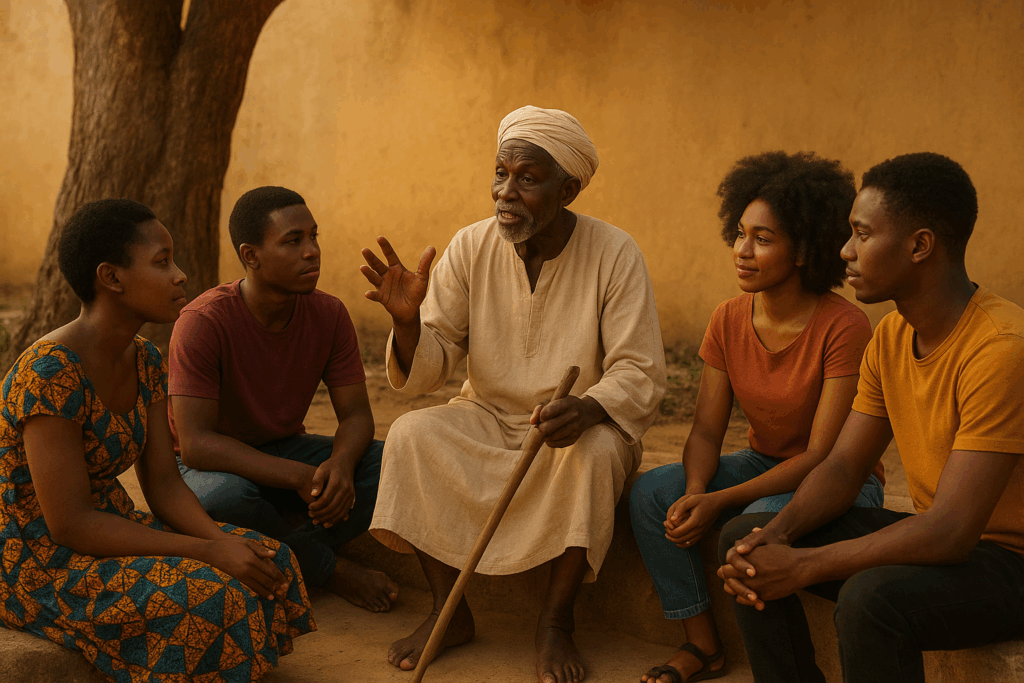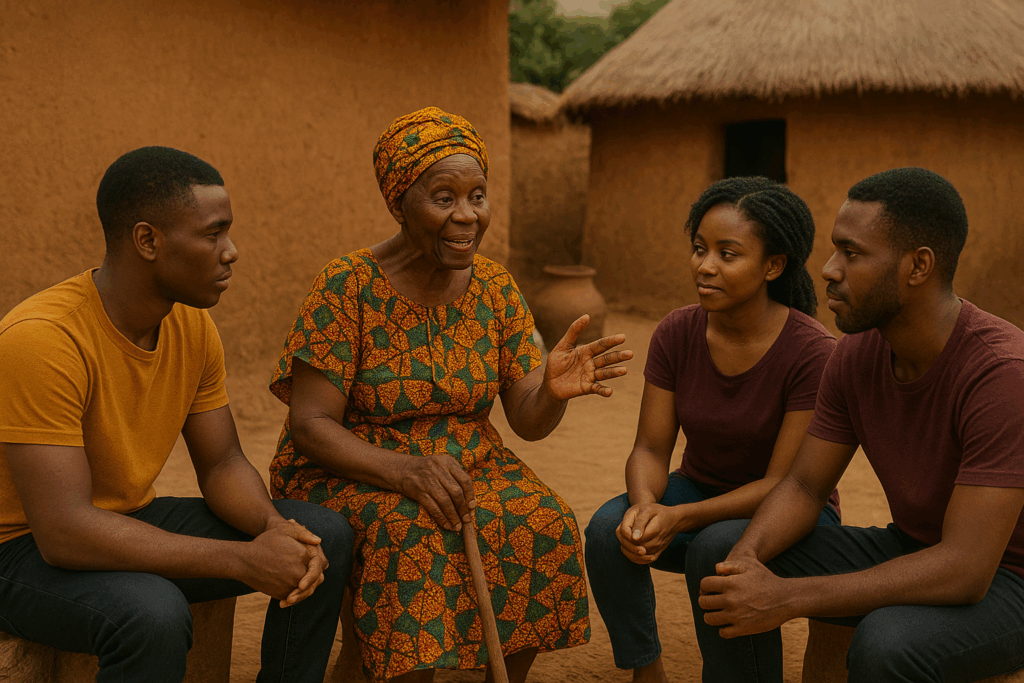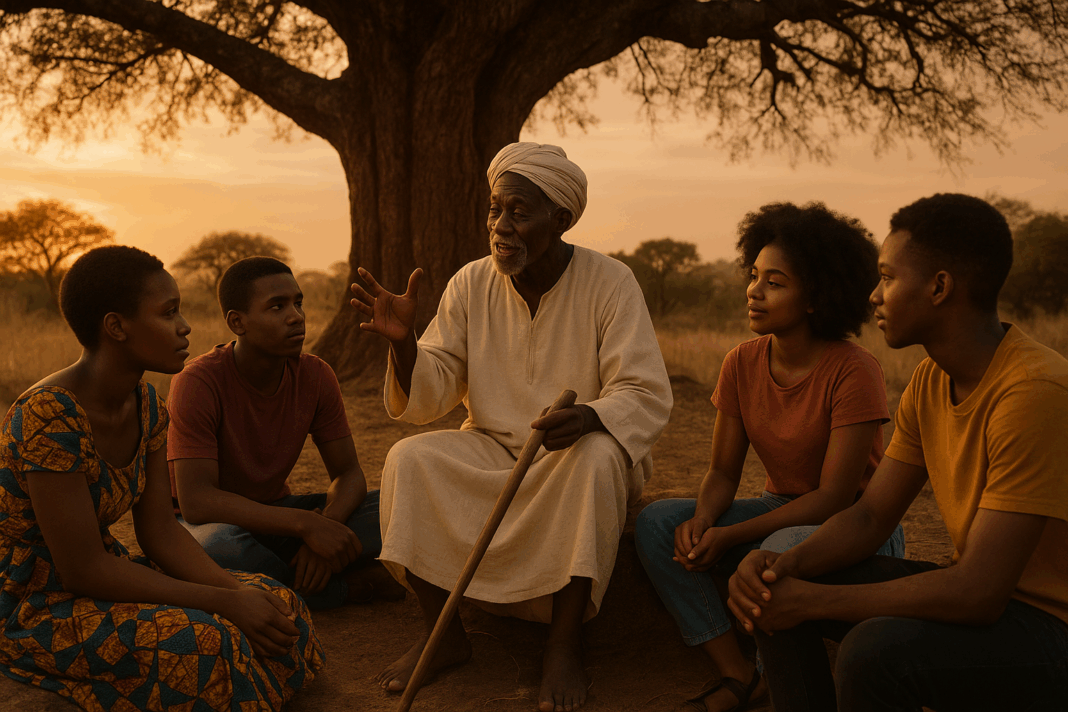In today’s fast-paced digital world, where smartphones, social media, and artificial intelligence dominate how we share and receive information, oral tradition might seem like an old-fashioned relic.
Yet, despite the rise of digital technology, oral storytelling — the art of passing down knowledge, history, and wisdom through spoken words continues to hold deep meaning. Oral tradition is more than just telling stories; it is a way of preserving memory, culture, and identity.
It remains one of humanity’s oldest and most powerful tools for connection, especially in places where the spoken word carries spiritual and communal value.
Across Africa, Asia, and indigenous communities worldwide, oral tradition has always been the heartbeat of cultural life. Before the invention of writing, stories, proverbs, songs, and myths were the only ways people preserved their history and values. Elders were the libraries, and storytelling sessions were the classrooms. These stories taught morality, bravery, respect, and resilience.
Even now, many families and communities still depend on oral history to remember their roots. In Nigeria, for instance, folktales like Tortoise and the Birds or proverbs such as “When there is no enemy within, the enemy outside can do no harm” continue to teach life lessons that modern textbooks may never capture.
One reason oral tradition still matters today is its emotional power. In the digital age, we are bombarded with text tweets, posts, emails — but much of it lacks the human warmth of face-to-face storytelling. When someone tells a story in person, using voice, tone, and expression, it creates a bond that no screen can replace.

It allows emotions to pass directly from one person to another laughter, empathy, suspense, even silence. Oral storytelling reminds us that communication is not just about information; it’s about connection. In many ways, oral tradition provides the humanity that the digital world often misses.
Another reason is that oral tradition helps preserve languages that are at risk of disappearing. Around the world, thousands of indigenous and local languages are vanishing every year. Many of these languages don’t have written scripts, meaning their survival depends entirely on people speaking and sharing them orally.
Songs, folktales, chants, and riddles are often the last vessels of a dying language. When elders tell stories in their mother tongue, they are not just entertaining they are keeping an entire culture alive. In this way, oral tradition becomes a form of resistance against cultural erasure and globalization.
Oral tradition also plays a critical role in community identity and belonging. In the digital age, where people spend more time online than interacting in real life, communities risk losing the sense of shared experience that oral storytelling provides.
When people gather around a fire, or even during family gatherings, to share stories of the past, they are reminded of who they are and where they come from. These moments strengthen social bonds and remind younger generations that identity is built through shared memory, not just online content.
Furthermore, oral tradition serves as an alternative form of knowledge transmission that is flexible and inclusive. Unlike written history, which often excludes voices of the poor, women, or minority groups, oral storytelling gives space to everyone. A grandmother’s tale, a fisherman’s song, or a hunter’s chant carries knowledge that may never be documented in books but is just as valuable.
In this sense, oral tradition democratizes history giving ordinary people the power to tell their stories and shape their communities’ collective memory.
Even in the digital age, oral tradition is finding new life through modern platforms. Podcasts, spoken word poetry, virtual storytelling festivals, and even YouTube channels now serve as digital firesides where people share stories, experiences, and wisdom.
Technology, rather than killing oral tradition, is actually helping it evolve. Young people are now blending traditional storytelling techniques with digital tools recording elders, creating animation of old folktales, or using social media to share indigenous knowledge with global audiences. Oral tradition is adapting, not dying.
At a deeper level, oral tradition matters because it teaches listening a skill fast disappearing in the digital world. The internet encourages everyone to talk, post, and comment, but not necessarily to listen.
Oral storytelling, on the other hand, is built on patience, presence, and attention. It requires the audience to pause, feel, and reflect. In a world of distractions, oral tradition reminds us of the quiet power of listening — of being fully present with another human being.

Moreover, oral tradition has the power to heal and unite. In post-conflict societies or divided communities, storytelling circles often serve as safe spaces where people can share trauma, remember their past, and rebuild trust.
In places like Rwanda after the genocide or among displaced communities in Nigeria, oral testimonies help preserve truth and prevent the rewriting of history. The act of speaking and being heard can be deeply therapeutic, helping individuals and communities find closure.
In conclusion, oral tradition is not just a relic of the past — it’s a living bridge between generations, cultures, and identities. While the digital age offers speed and convenience, oral storytelling offers meaning and memory.
The challenge today is not to choose between technology and tradition, but to find a balance where both can thrive. As long as people continue to speak, listen, and share stories, oral tradition will never die. It will continue to remind us that beyond our screens, what truly keeps humanity alive are our voices, our memories, and the timeless stories that bind us all.

